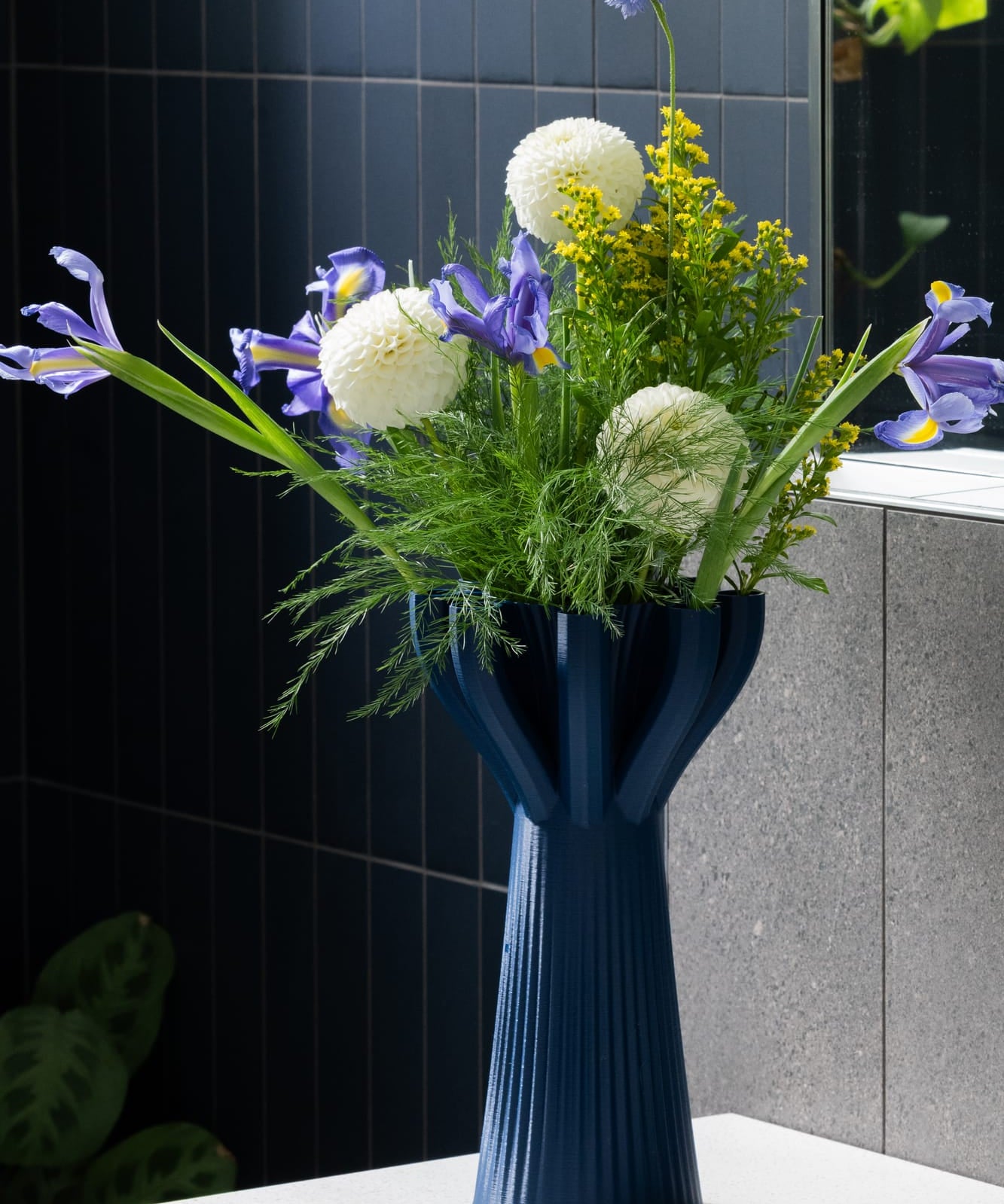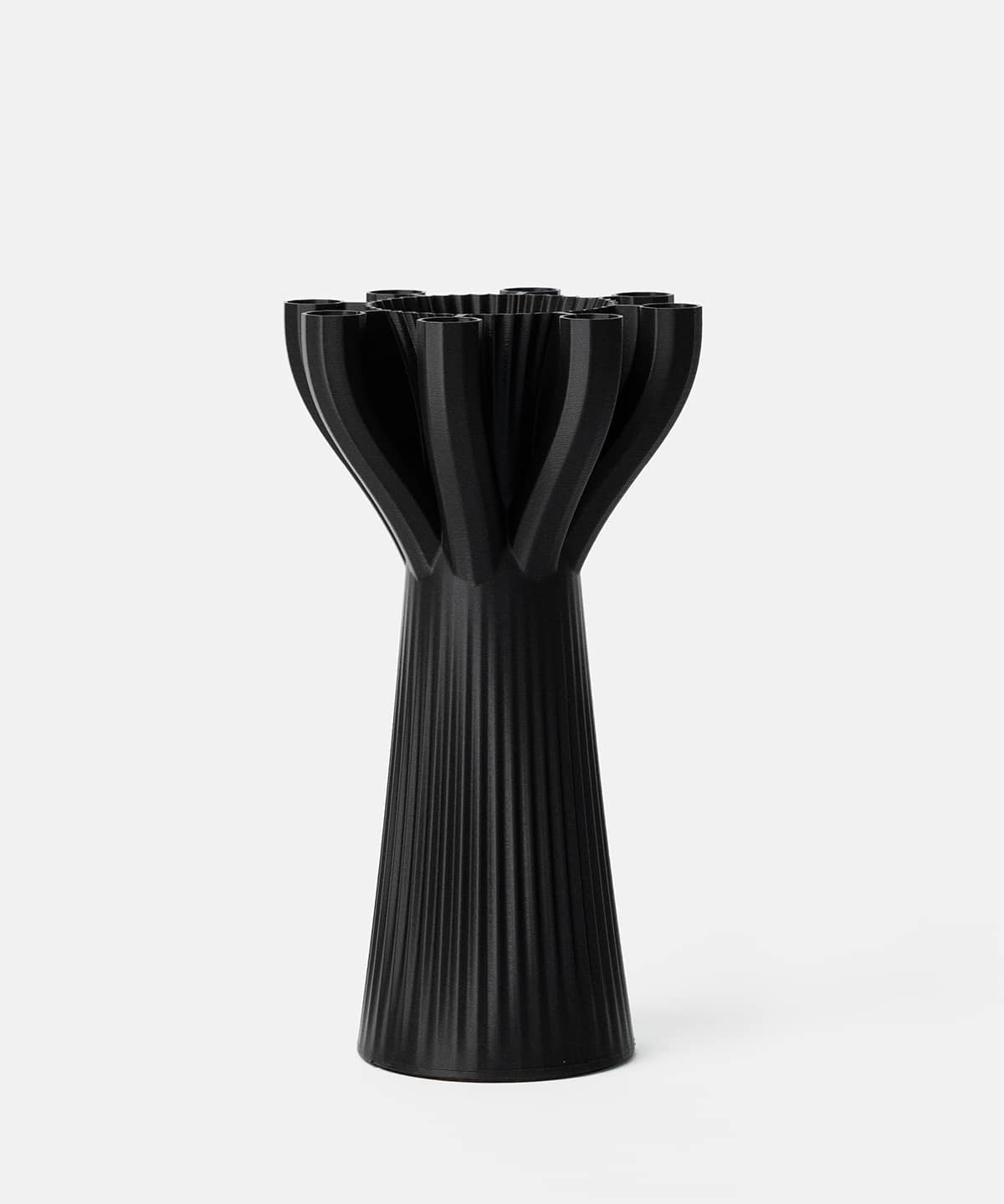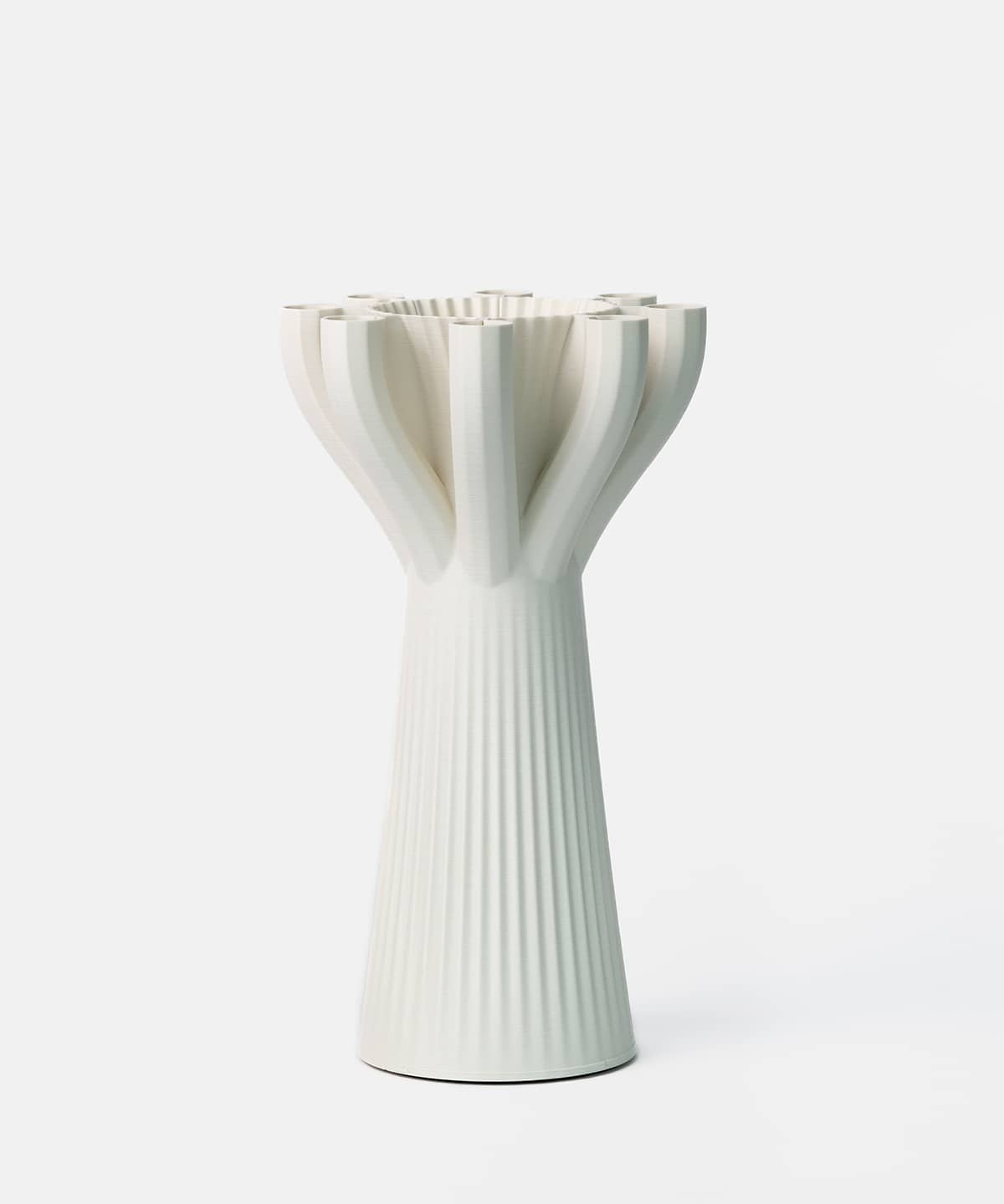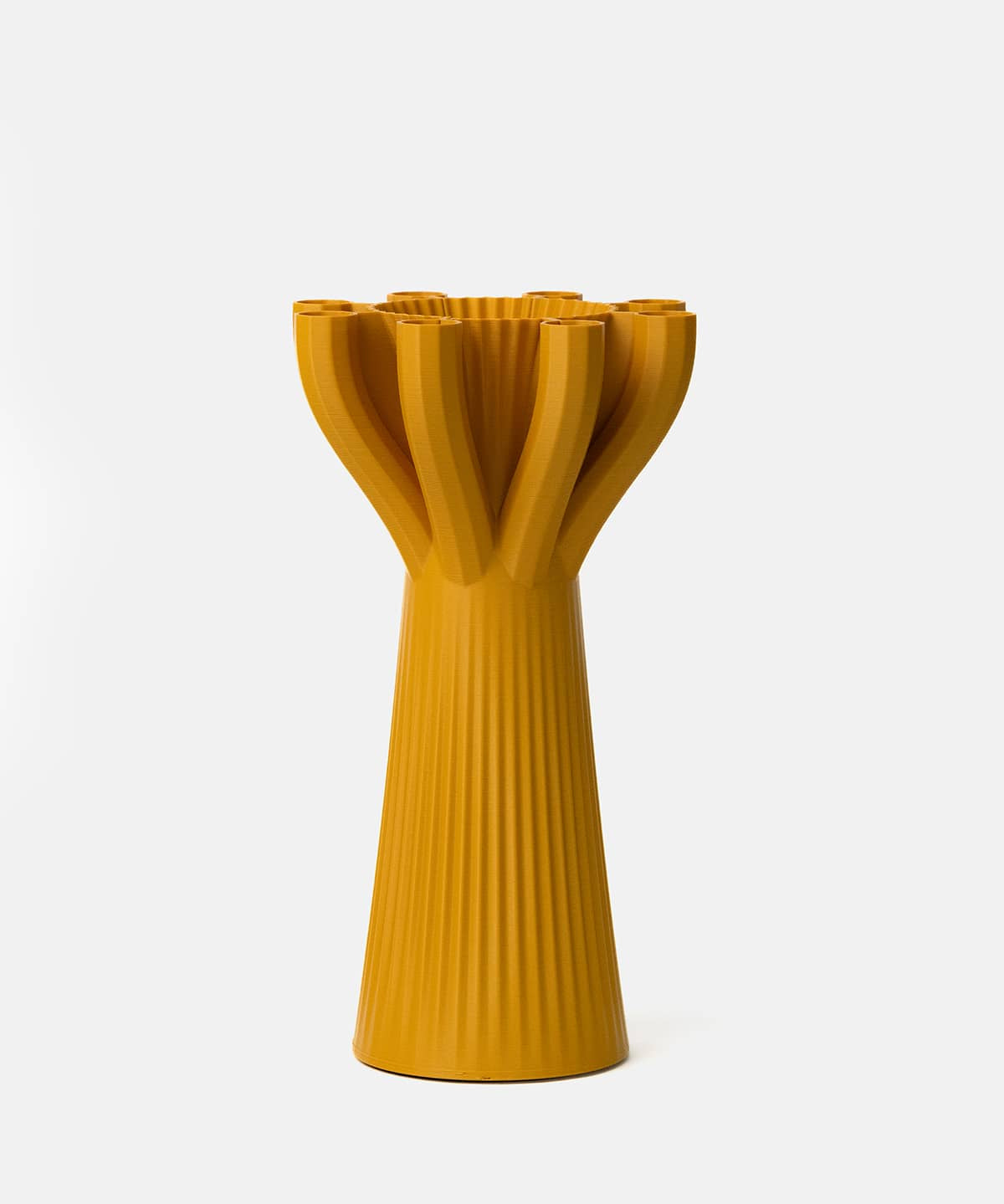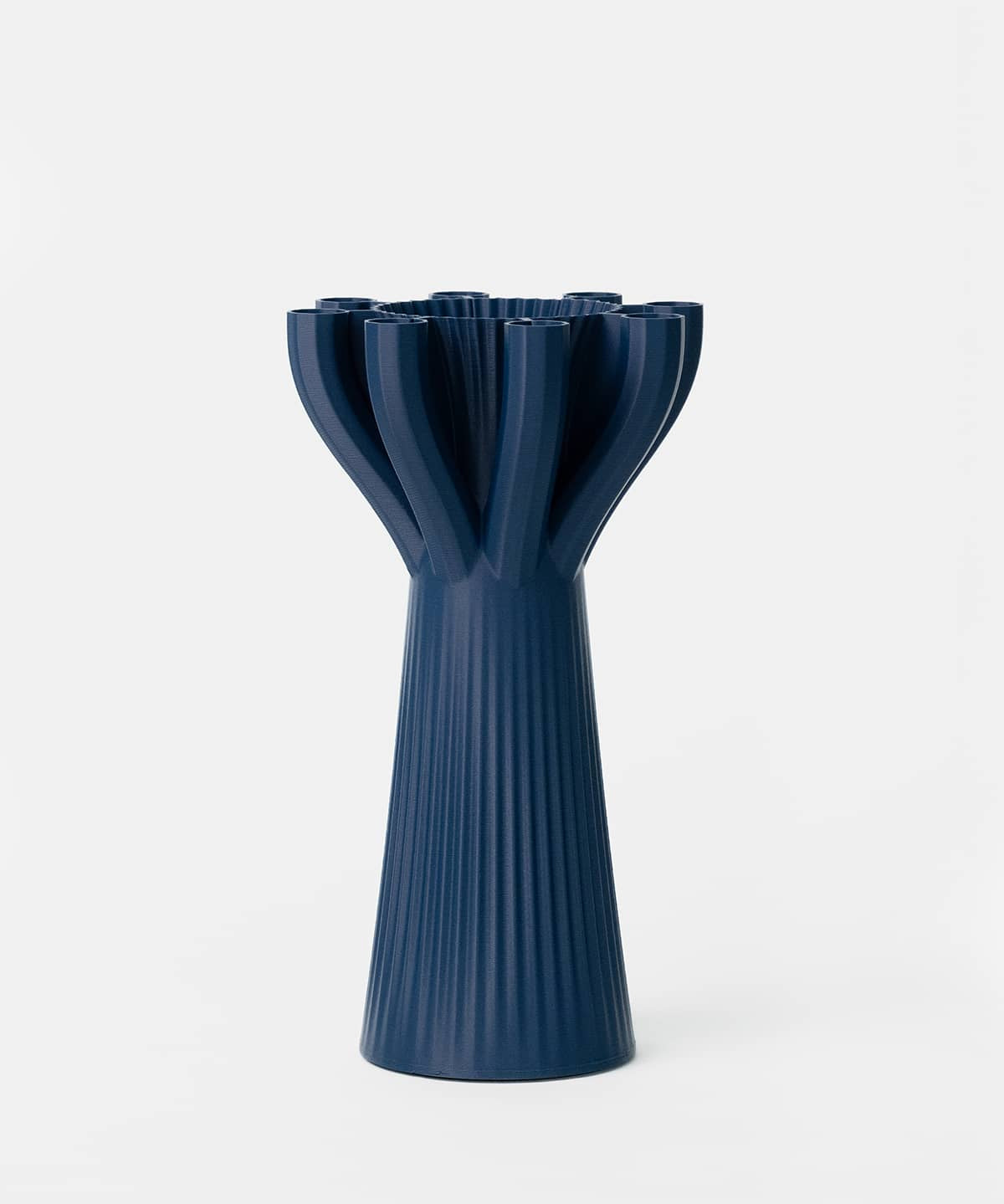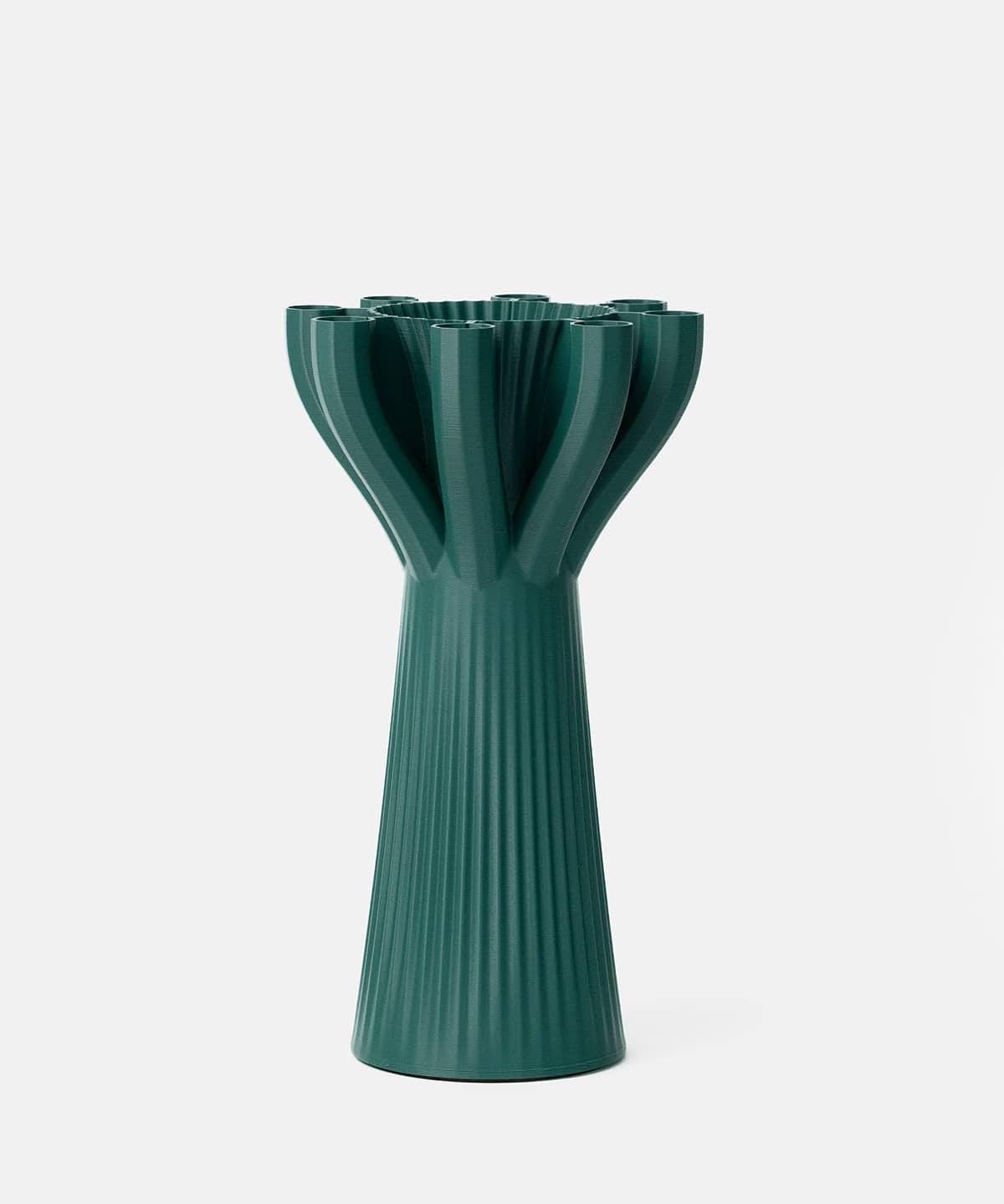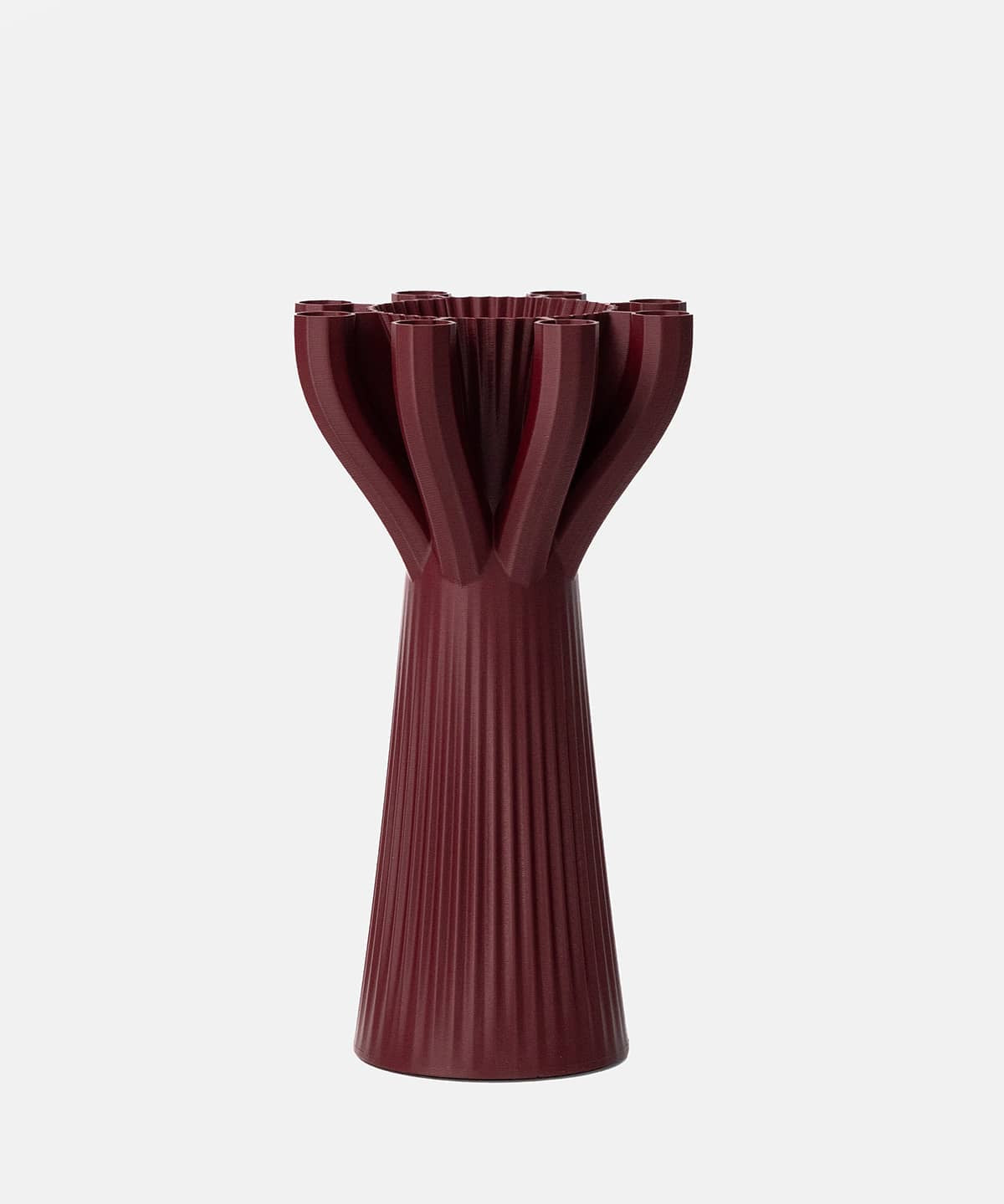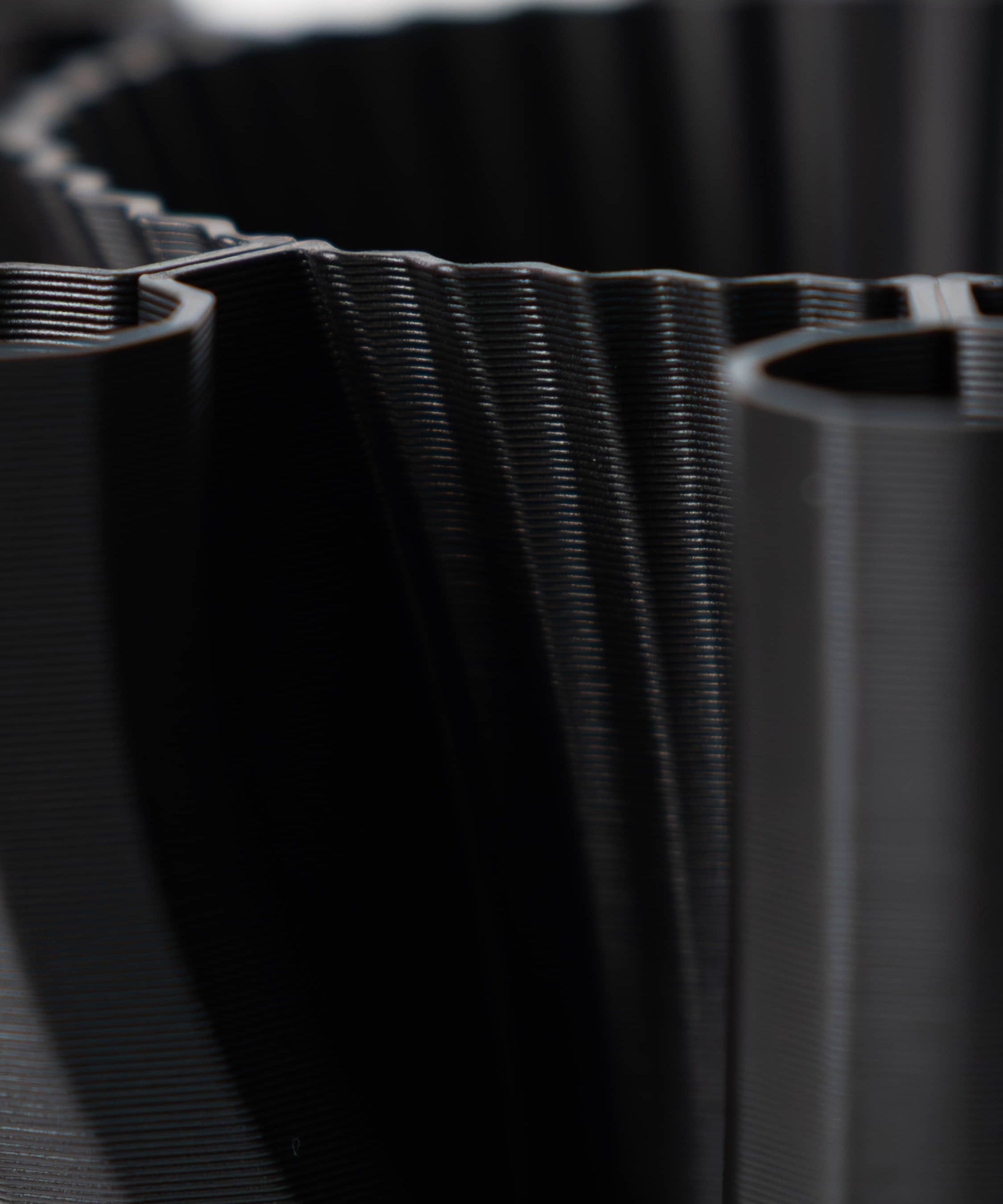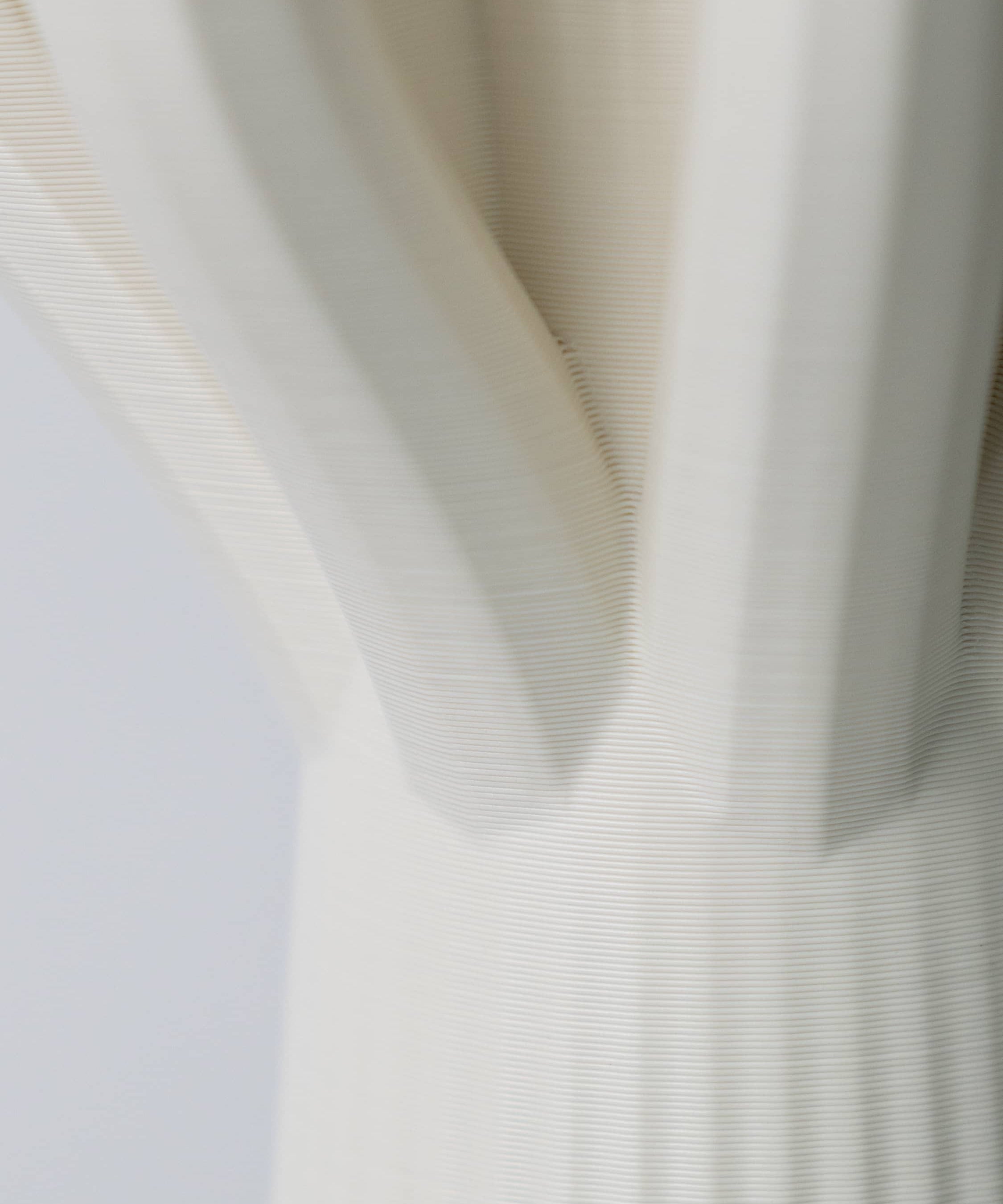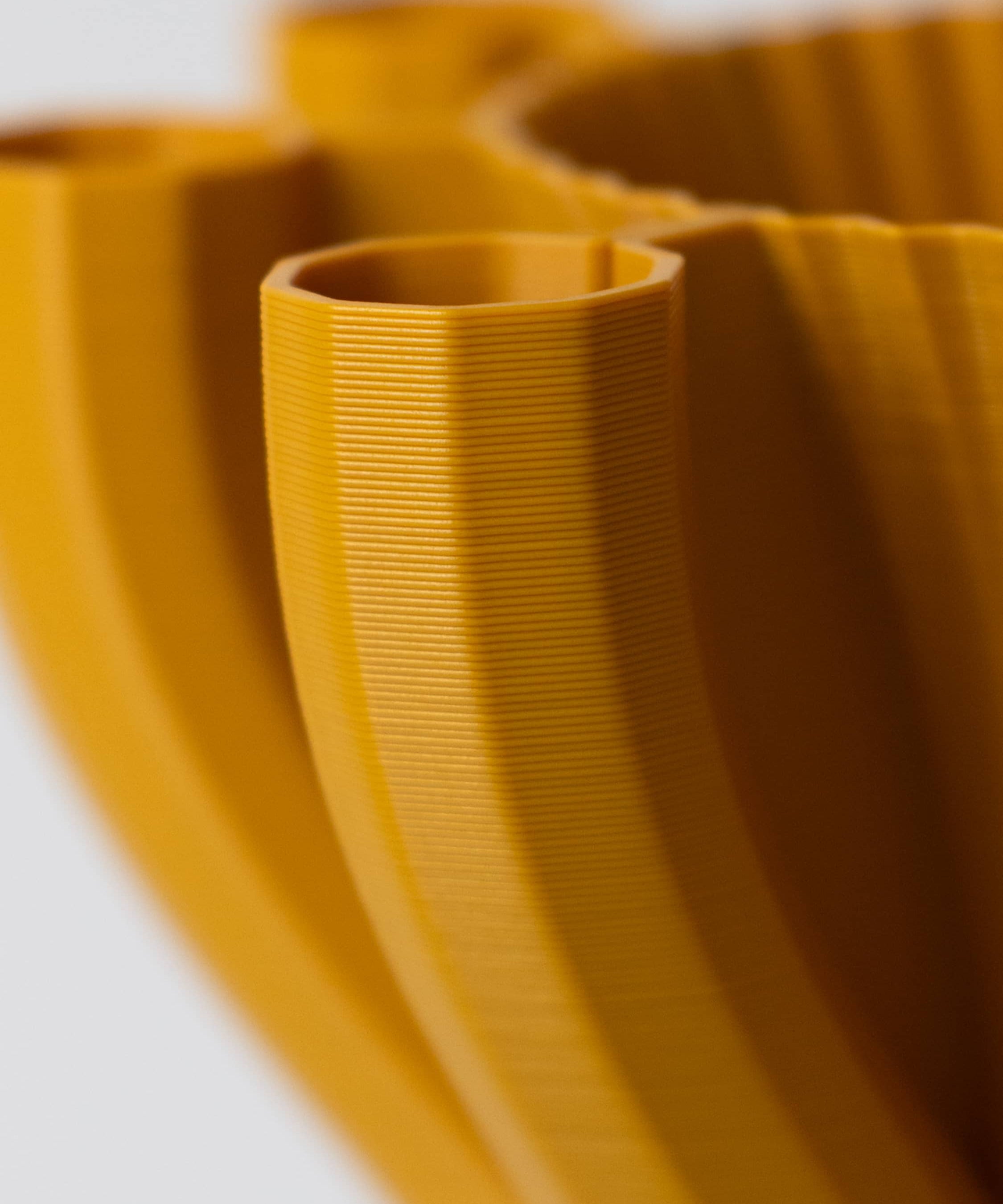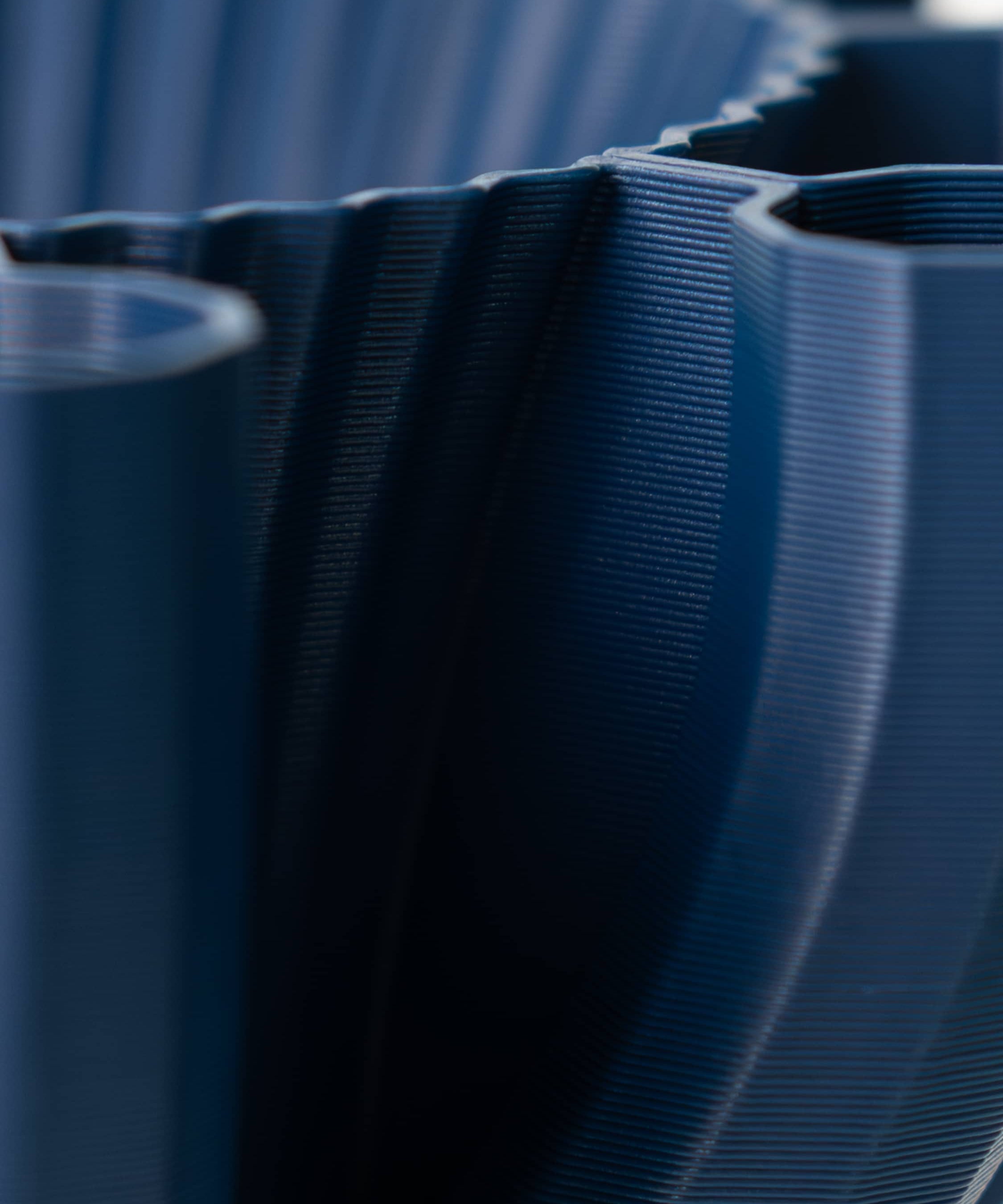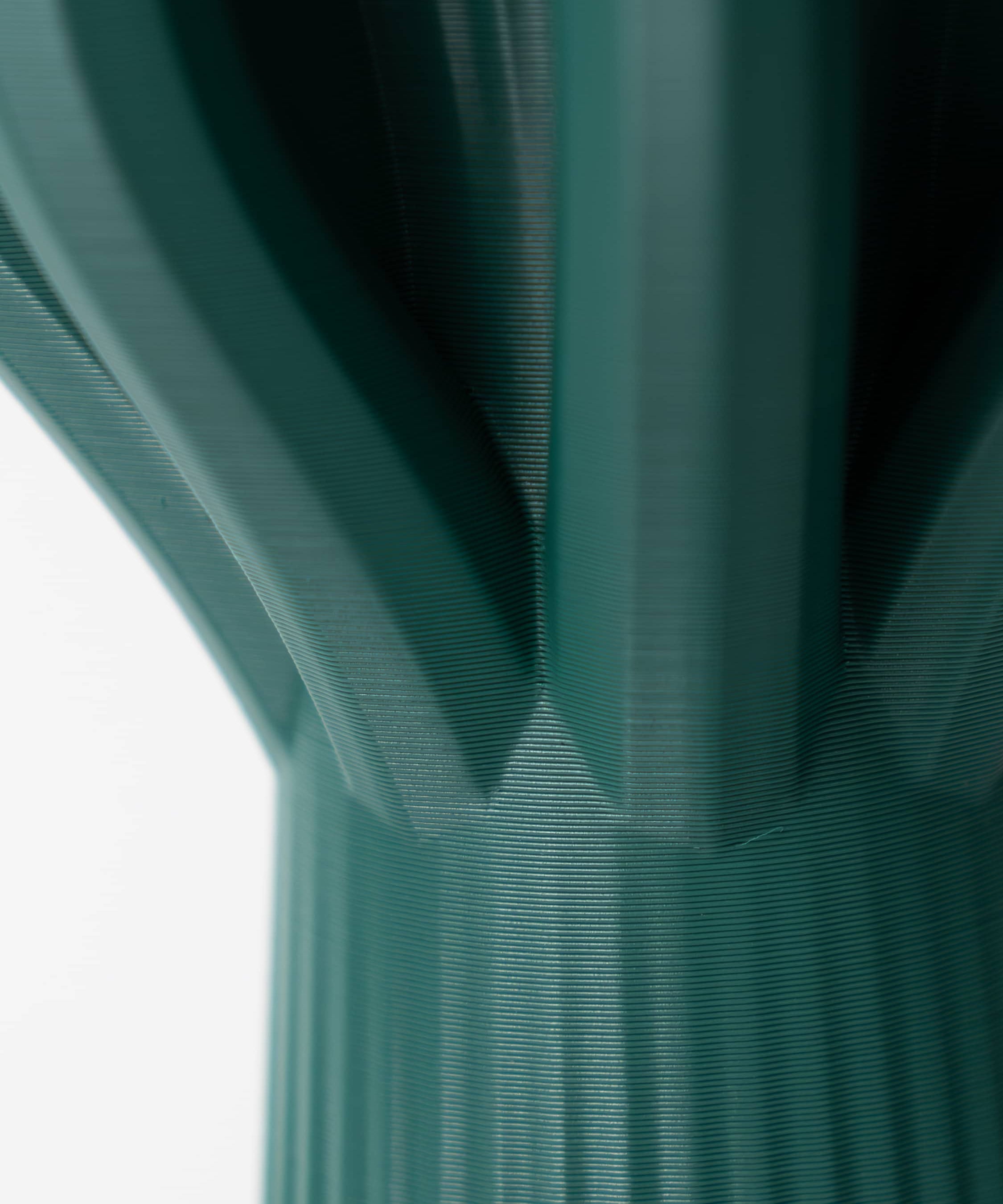It is imperative that we create a future where the simple act of owning a vase or a chair doesn't come with hidden costs from extraction, production, and exploitation.
Recycling rates for plastics are as low as 9%, and furniture is near 0%. This is why our products come back to us at the end of their use. Cyrc ensures the materials never become waste entering landfills or the natural environment.
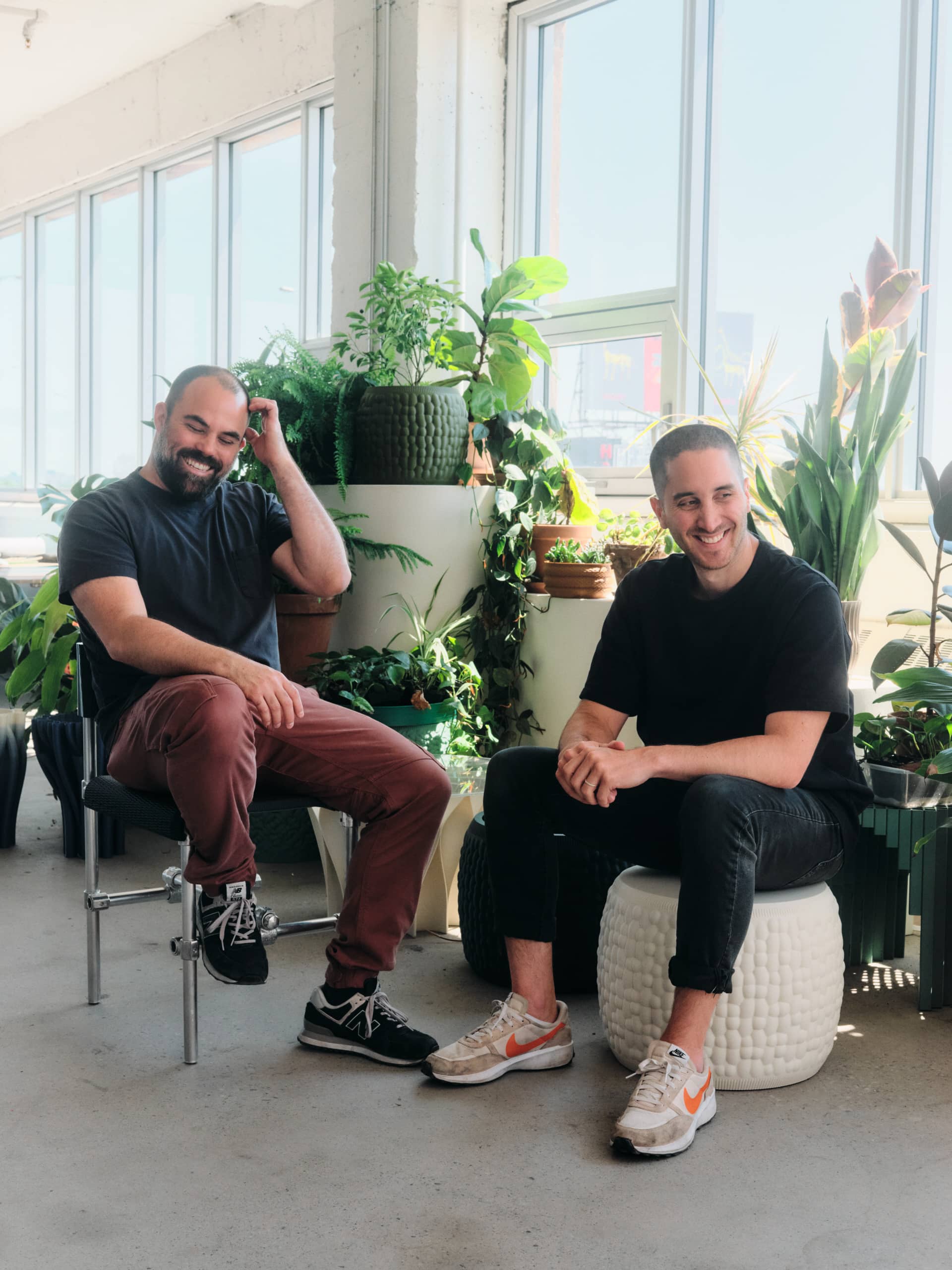
Driven by a vision to exemplify the circular economy through unique design, Daniel and Guy founded Cyrc in Montreal in 2021. When they met, they seamlessly connected their ideas, determined to ensure their creations wouldn't contribute to more waste. They set out to build a brand with a business model designed to transform today's wasteful production and consumption patterns.
Our Circular Process
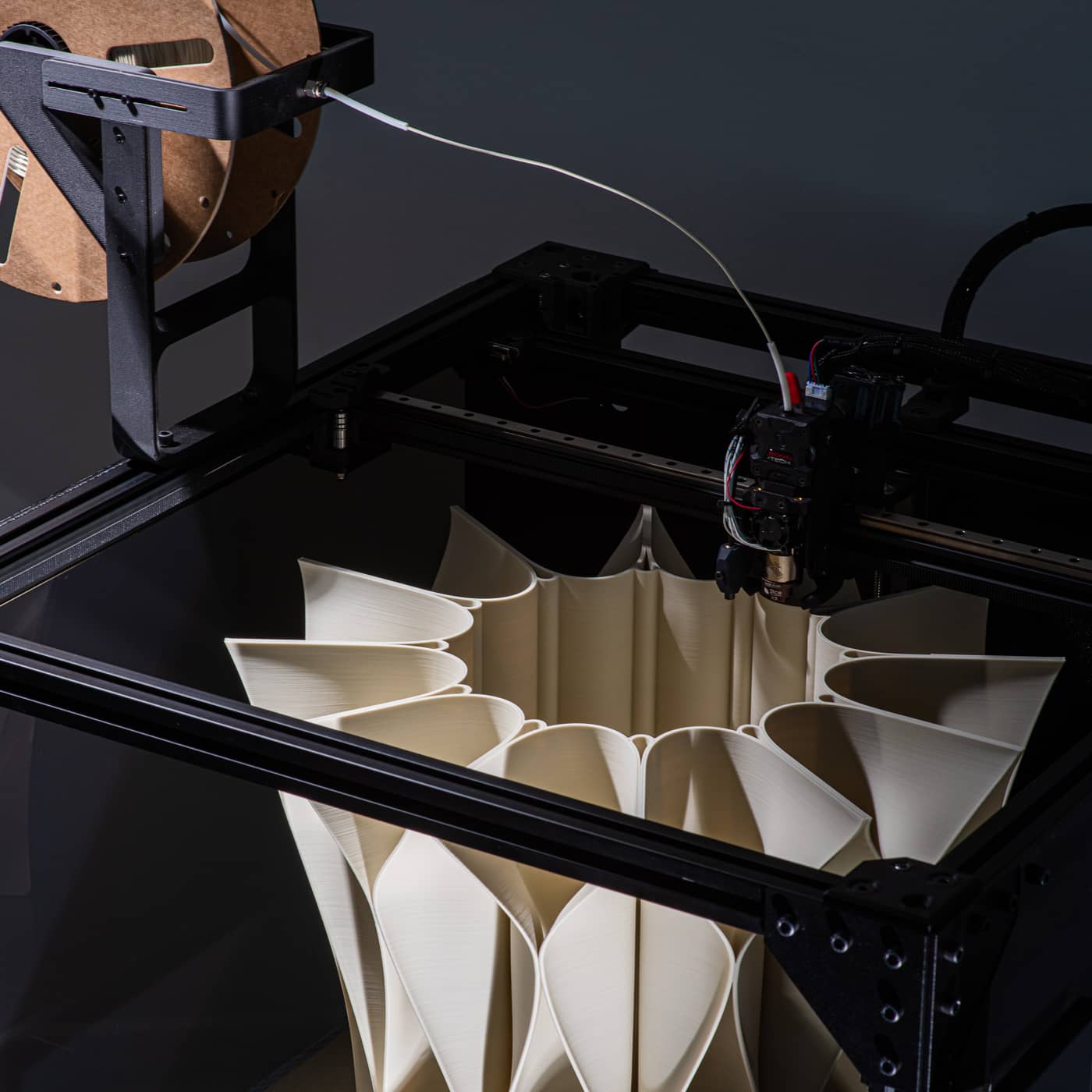
Designed and 3D printed in our Montréal Studio.
The flexibility of 3D printing means we can reimagine the entire business model with sustainability as the foundation.
With our printers, we can explore new design languages, create unique custom pieces, produce on-demand, and elevate recycled materials' value without generating waste.
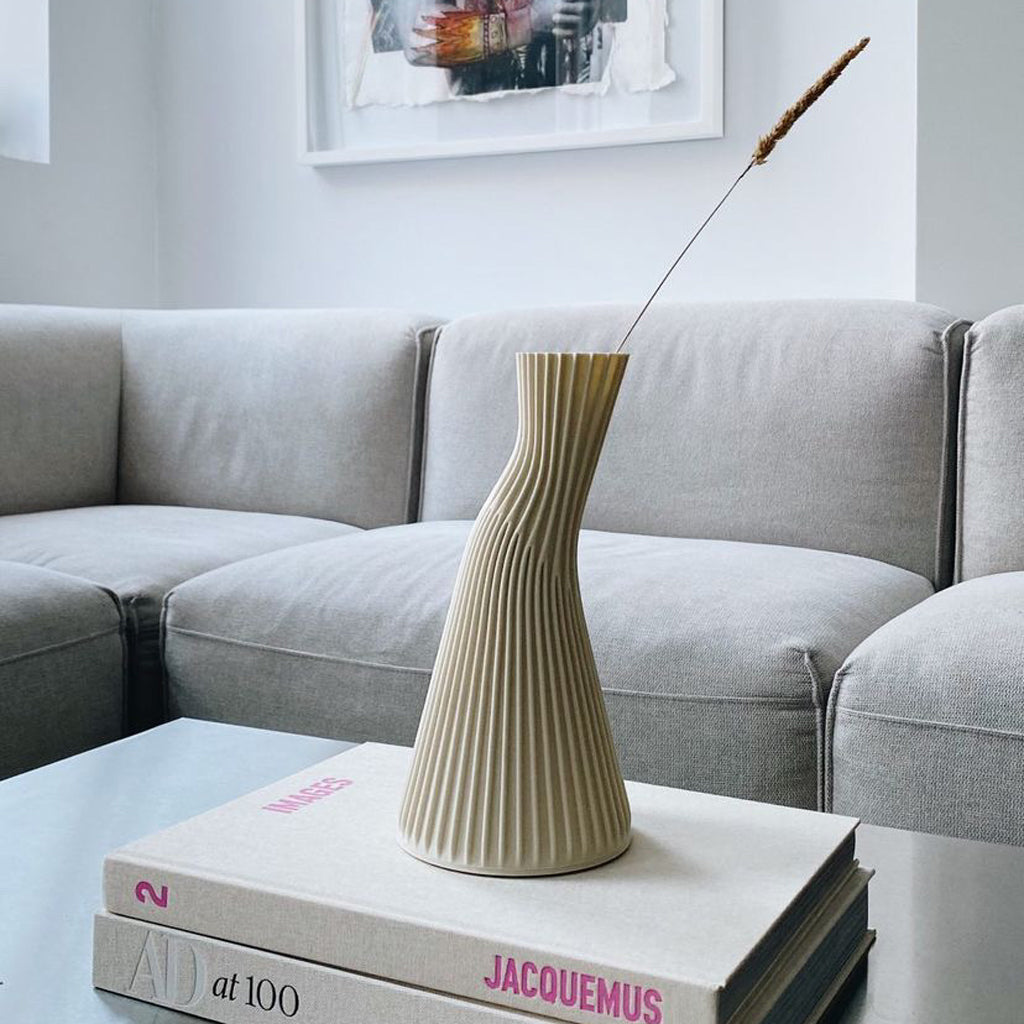
Enjoy it for as long as you like. It will last.
Our products are made to order, which means they are made for you and made to last for as long as you want.
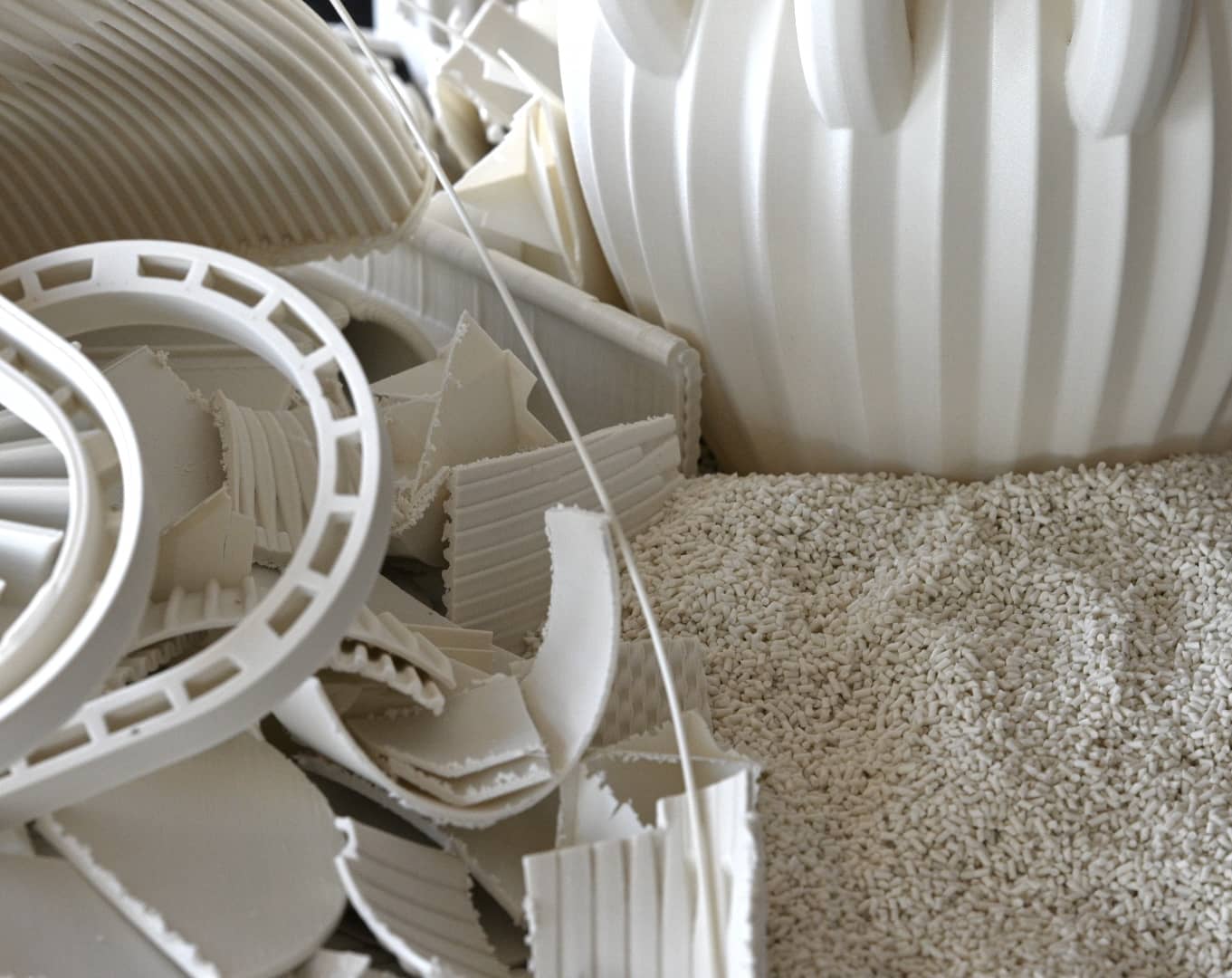
Need a change in your life?
No matter when or why the end of the life of your product arrives. Just send it back to us. We'll shred, chop, extrude and/or pelletize the plastic to prepare it for a new life.
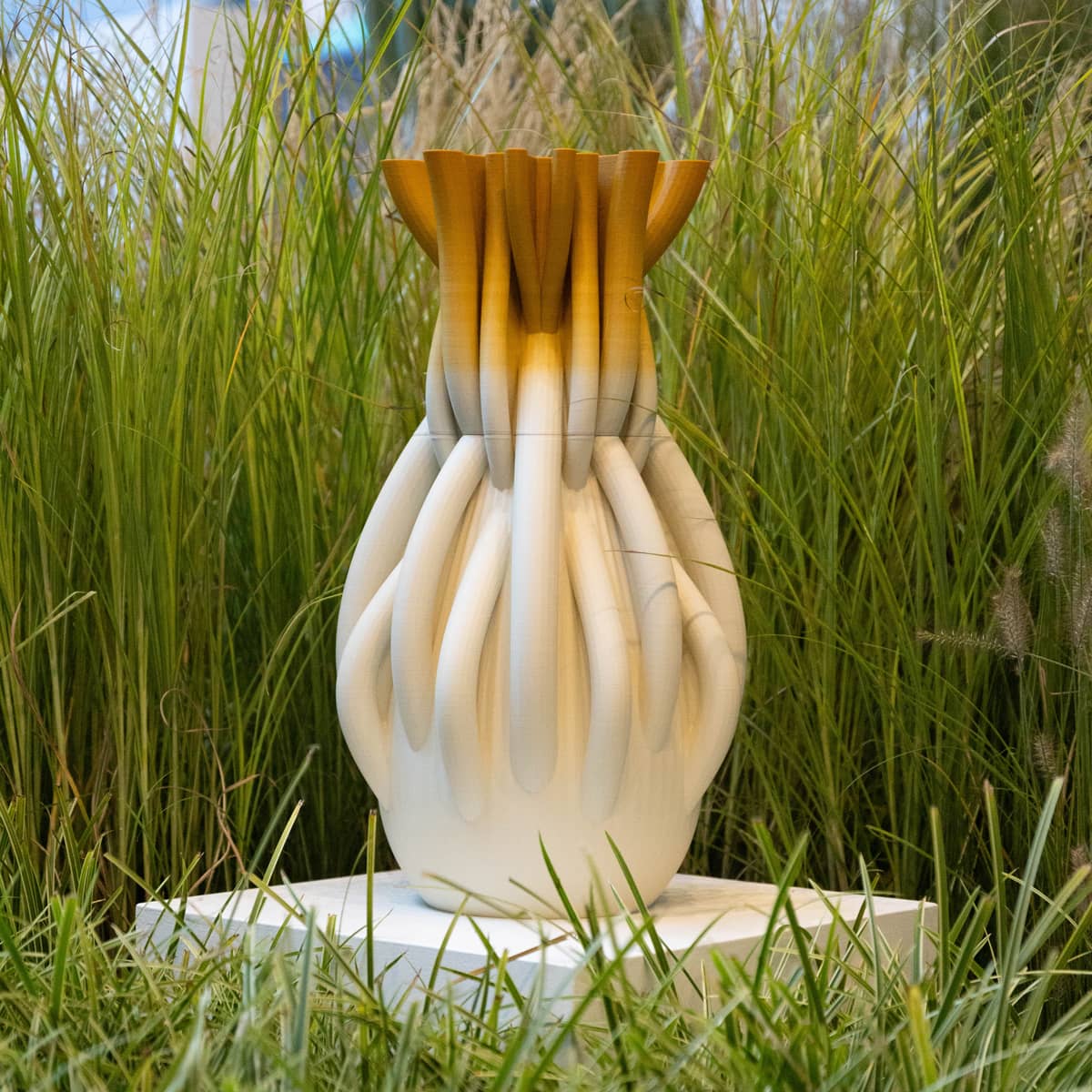
Together we can keep the material in our circular loop.
There is always something beautiful we can continue creating with the materials we use.


















